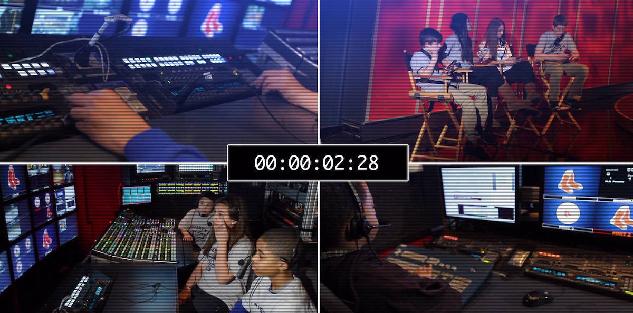Featured courses
- Understanding The Shift by Brandon Ogle
- Two Drills to Improve Outfield Movement and Communication by Grant Young
- The Ultimate Resource For Coaching Youth Baseball by Jackson Chlebowy
- Become a Master at Bunting by Brandon Ogle
- 5 Reasons Why There Is More To Good Base Running Than Just Speed by Brandon Ogle
- Three Injury-Prevention Tips For Your Offseason Pitching Program by Grant Young
- How to Teach Hitting to the Next Generation by Grant Young
- Developing Defensive-Minded Baseball Catchers by Grant Young
- 3 Baserunning Tips to Score More Runs in Baseball by Grant Young
- 5 Outfield Drills to Work on in Season by Alec Burris
- Keys For Scoring More With Runners on First and Third Base by Grant Young
- How to Develop Your Game to Become a Five-Tool Player by Brandon Ogle
- 3 Coaches Share the Keys to Running Baseball Practice the Right Way by Grant Young
- Four Drills to Sharpen a Baseball Hitter’s Vision at the Plate by Grant Young
- Four Quotes to Hit Better With Two-Strikes by Grant Young
- Four of Former MLB Pitcher Juan Nieves’ Movement-Based Pitching Drills by Grant Young
- Two Tips For Developing an Elite Baseball Bullpen by Grant Young
- Overcoming the Four Challenges of Indoor Baseball Practices Because of Weather by Grant Young
- Three Tips to Make Your Baseball Team Mentally Tougher by Grant Young
- Three Priceless Philosophies to Motivate Your Baseball Team by Grant Young
- Three Offseason Baseball Drills to Simulate Competition by Grant Young
- Three Baseball Offseason Strength and Conditioning Essentials by Grant Young
- Important Ways to Improve Your Baseball Team’s Baserunning by Grant Young
- Three Ways to Perfect Hitting Mechanics From an MLB Icon by Grant Young
- Catchers can influence pitchers...for bad or good by Drew Johnson
- Throwing Strikes and Playing Good Defense Equals Wins by Jose Ortiz
- Legendary Indiana Head Baseball Coach Bob Morgan’s Offensive Theory by Grant Young
- Tennessee Head Baseball Coach Tony Vitello on How to Practice Baserunning by Grant Young
- Three Great T-Ball Drills For Youth Baseball Players by Grant Young
- How to Manage a Baseball Pitching Staff by Grant Young
- Three Uncommon Tips to Become a Better Hitter by Grant Young
- How a Baseball Coach Can Develop Strike Throwers by Grant Young
- Drills to Develop Elite Baseball Outfielders by Grant Young
- Baseball Training Exercises to Strengthen Arm and Bat Speed by Grant Young
- How to Use Bunting to Score More Runs by Grant Young
- How To Build An Elite Baseball Infielder by Grant Young
- Three Drills to Improve Your Baseball Team's Infield Play by Grant Young
- Three Keys to Curating a Pitching Staff’s Success by Grant Young
- 3 Techniques to Develop a Baseball Player’s Hitting Approach by Grant Young
- How to Cultivate Confidence Within Your Pitchers by Grant Young
- 5 Every Day Drills To Help You Become A Better Catcher by tyler Linderman
- How to Throw A Curveball by Brandon Ogle
- How to Assemble a Lock-Down Bullpen by Brandon Ogle
- How to Throw a Sinker by Brandon Ogle
- How to be a Smart Baserunner by Brandon Ogle
- Improving a player's slugging average by Phillip Woolgar
- The 8 Fundamentals of Pitching by Drew Johnson
- How to Throw a Deceiving Changeup by Brandon Ogle
- Step Up Your Outfield Defense With These Three Drills by Jose Ortiz
- 8 Baseball Drills Every Player Should Practice by Drew Johnson
- How To Become An Elite Defensive Outfielder by Tyler Linderman
- 5 Tips For Crushing A Curveball by Johnny Grassi
- LEGENDS FOR YOUTH INCLUSION BASEBALL CLINIC by Phil
- Fourteen Ways To Turn A .300 Hitter Into A .210 Hitter by Jay P. Granat, Ph.D.
- How To Become The Ideal Leadoff Man by Brandon Ogle

Understanding The Shift
- By Brandon Ogle
Baseball is a constant game of adjustments. In the 1940’s, Ted Williams essentially forced opposing managers to enact a shift because it was the only way to slow him down. It worked for a little while until the Red Sox slugger made an adjustment to hit more to the opposite field. This is just one of many examples of how teams have implemented the shift to serve as an adjustment to get more hitters out.
Basic Positioningitioning
In terms of the actual positioning, we have seen more varieties arise in recent years. However, for the sake of this article, I’ll give the most general one that’s been used. Here is how it looks: The third baseman will move over to where the shortstop normally is. The shortstop will slide over to the right of second base. Meanwhile, the second baseman will move back into the grass and between second and first. The first baseman will slide over closer to the line. As for the outfield, the right fielder can get closer to the line, and the center fielder will move into right-center. This is the most commonly used shift, but it is still important to gauge the hitting abilities of the player at the plate and adjust appropriately.
Advantages of Using the Shift on Defense Defense
Before even starting this section, I want to make it clear that merely shifting a lot is not always an effective strategy. There is a substantial difference between shifting a lot and shifting effectively (recording outs). For younger levels, it might be hard to determine when to shift. If it’s a team you’ve played before or one that you can watch the opposing players take batting practice, then this might be a little easier. However, there are plenty of advantages that can arise from implementing a shift. The most prevalent one is limiting a hitter’s ability to pull the ball. Obviously, baseball players love to pull the ball to nab extra base hits. It is much more difficult to be a consistent opposite-field hitter. In fact, we’ve even seen some players dominate throughout the minors only to struggle in the majors once managers start shifting against them. The shift also benefits pitchers. When their defense is aligned appropriately, they can limit hits against them and basically have to throw fewer pitches, thus allowing them to go deeper into the game. In addition, they can focus solely on the inner half of the plate to force the hitter to pull it. These are two of the primary advantages that can be brought about by shifting effectively.
Players Must Learn Other Spotser Spots
In order to implement a shift, the infielders must be capable of sliding a little out of their comfort zone. For example, the third baseman is no longer covering the third baseline. Rather, now he is forced to basically act as a fill-in shortstop. The same goes for the rest of the infield, including the second baseman, who is now technically in the outfield. All of these may sound like minor adjustments, but when you get in an actual game situation, they seem a little more rigorous. With this being the case, I don’t think it’s a terrible idea for young infielders to work on their versatility. This would include taking grounders at different positions. Avoid being solely focused on one position. As for a Major Leaguer that’s portrayed this exact versatility, check out the increasingly valuable Ben Zobrist.
Since you have to practice other spots, it doesn’t hurt to study some more online about these other positions. This instructional video from CoachTube will walk you through some of these other spots. You don’t have to spend a ton of time on them, but it can be helpful to get a general idea!
How to Beat the Shifthe Shift
Despite the clear advantages a shift can bring, there are also plenty of ways for hitters to beat it. Jonathan Lucroy, who is the catcher for the Milwaukee Brewers, is one example of a player who was shifted against immensely. His response: just adjust! Lucroy referred to this adjustment, saying, “Personally, I love when teams shift on me. I try to hit ‘em where they ain’t, like Willie Keeler.” There are a few ways, including the ones Lucroy’s exhibited, that can beat the shift.
Buntong>Bunt
Typically, we see bigger players get shifts put on them, so it might sound a little crazy to ask these big power bats to bunt. But, why not? If the infield is basically entirely on the right side, all you have to do is firmly bunt it down the line and you’ll be safe every time. When you do this a couple of times to the defense, they’ll start to respect your abilities and they will no longer implement the shift.
Take Advantagedvantage
With a shift on, the pitcher is going to try to pound you inside to force a pull. However, even at the Major League level, pitchers make mistakes. They may intend to throw a cutter inside, but instead leave it hanging on the outside corner. If you try to pull this ball, it will be an easy pop out. The alternative is to go with it and hit a soft liner to left for a hit. Take your pick on which you’d rather have.
Increased Relevanceelevance
As I mentioned in the introductory sections, coaches love to shift nowadays. If a player is going to try to kill you by pulling the ball, then why not put extra guys over there because you know that’s where it’s going. The number of shifts in the MLB rose by over 10,000 from 2010 to 2014. That is certainly a staggering figure. You’d think of all players that Major League players wouldn’t hesitate to make the adjustment to continue to succeed. However, it isn’t difficult to see why they don’t adjust immediately. These are players that have probably dominated their entire lives and continuously been the best player on the field at any given time. Now, the opposition is attempting to limit their abilities by putting extra guys on the right side? This stubbornness and lack of adjusting is a perfect explanation why managers will continue to implement shifts!
Numbers Gameers Game
Baseball is a numbers game. Even at the youth level, players develop tendencies. When they see an inside pitch, they want to pull it. After multiple times of doing this, they’ll want to pull everything. With this said, it is the defense’s responsibility to read and react to these tendencies. A shift is one perfect example of it. If you think a younger age like 12 is too young to shift, think again because it just might make you a much better team!



